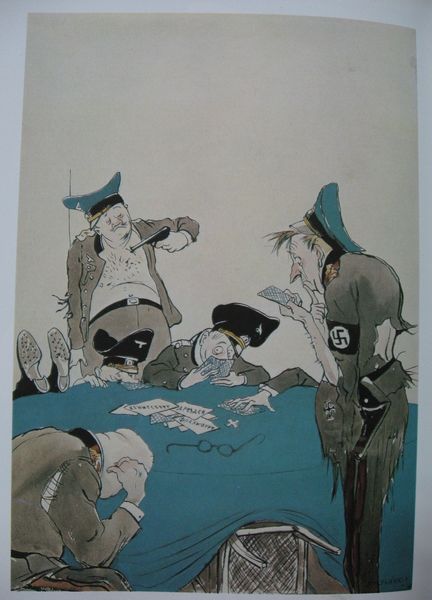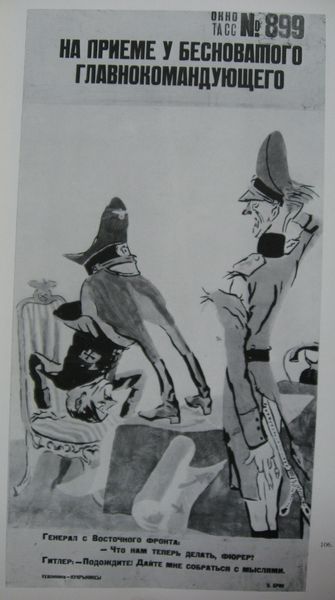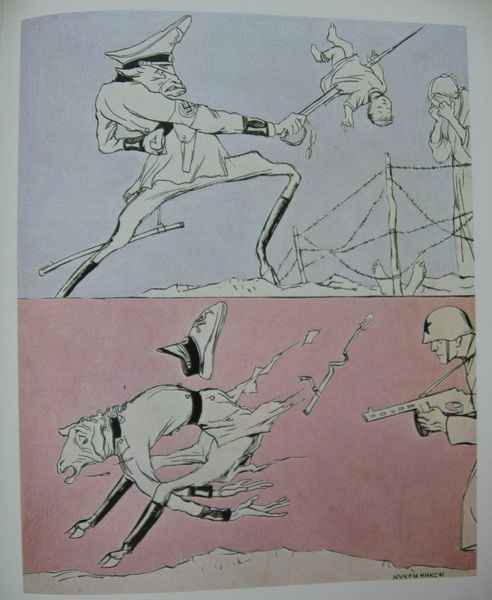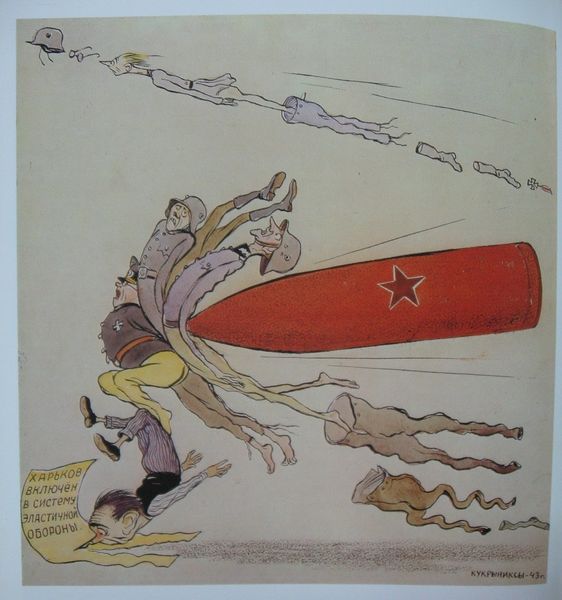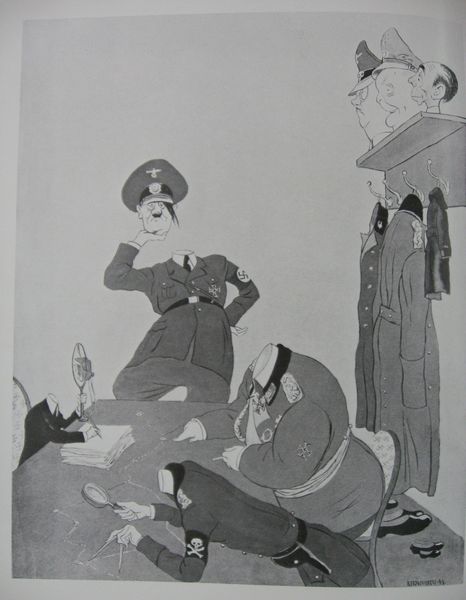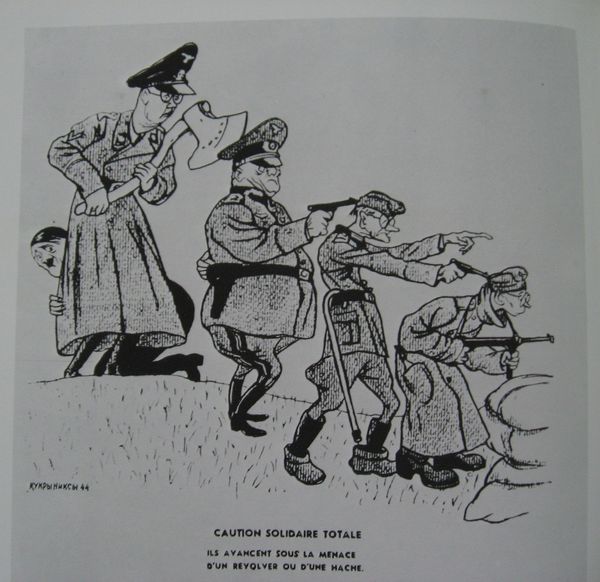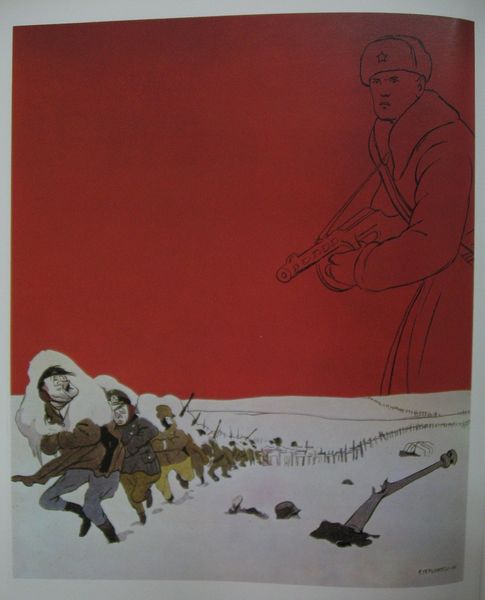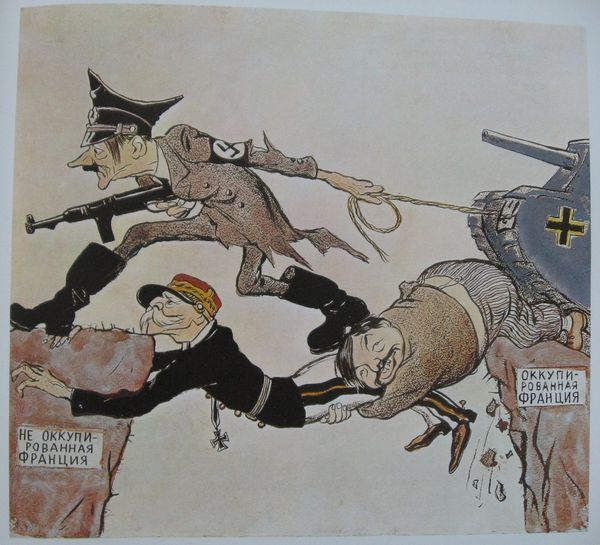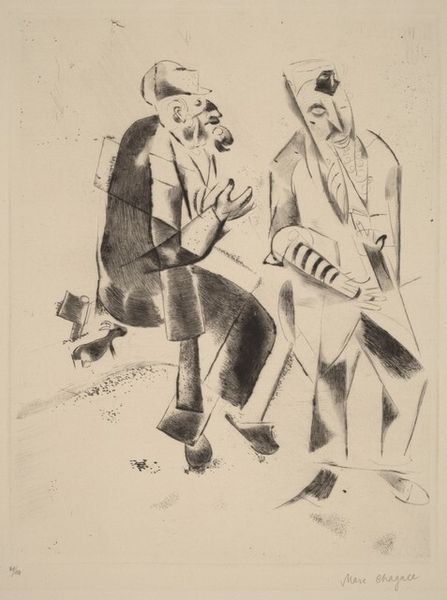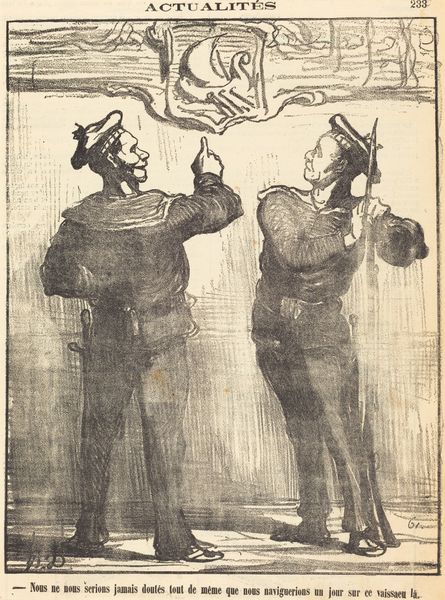
watercolor
#
caricature
#
anti-art
#
war
#
watercolor
#
soldier
Copyright: Kukryniksy,Fair Use
Curator: This provocative, untitled watercolor caricature is attributed to the collective authorship of Kukryniksy. At first glance, what is your impression? Editor: Chaos! The wild, attenuated figures and off-kilter perspective suggest an unravelling, a sort of satirical dance of death rendered in unsettling hues. Curator: Precisely. It's a stinging commentary. Note the depiction of Nazi soldiers. Their skull-and-crossbones insignia is a direct reference to the SS, symbols laden with meanings of terror, brutality and the complete inversion of moral order. Editor: And those gaunt faces and spindly limbs; they're physically grotesque. Look at the extreme distortions of proportion. It amplifies their menacing air, almost like a parade of ghouls. The stark angularity throughout mirrors a fracture in societal norms, doesn’t it? Curator: The Kukryniksy trio emerged during the Soviet era, renowned for their wartime propaganda posters and cartoons. They tapped into a rich tradition of folk imagery—think lubok prints—to mobilize public opinion against the fascist threat. This imagery acted as a sort of inverted Byzantine iconography for the masses. Editor: Yes, this is anti-art in its essence, almost aggressive in its aesthetic rejection of harmony or beauty. I would have to say the only balance it finds is with its subject: a warped image of a corrupt and evil system. And it feels rather psychologically pointed to present those at the top (literally!) as so absurd. Curator: The 'little man' being escorted also conveys powerful significance; possibly referencing oppressed and marginalized groups suffering at the hands of Nazi rule. That one figure on a peg leg especially embodies vulnerability. This isn’t a simple lampooning of authority; it is intended as something like psychological warfare. Editor: The urgency is palpable even now. To create effective art like this requires an understanding of aesthetics and its possible inversions. I suppose the historical weight adds another layer too—almost a grim echo through decades. Curator: Ultimately, this work uses the tools of caricature and grotesque distortion to create a moral indictment. Kukryniksy leveraged potent imagery to expose the hollowness and barbarity beneath the surface of Nazi ideology. It reminds us that such dark symbolism, when left unchallenged, can manifest in the worst chapters of history. Editor: Absolutely. Examining how its disjointed structure speaks to moral chaos, even after all this time, is why images like this remain so critical. Thanks to all that we are more equipped to receive it!
Comments
No comments
Be the first to comment and join the conversation on the ultimate creative platform.
